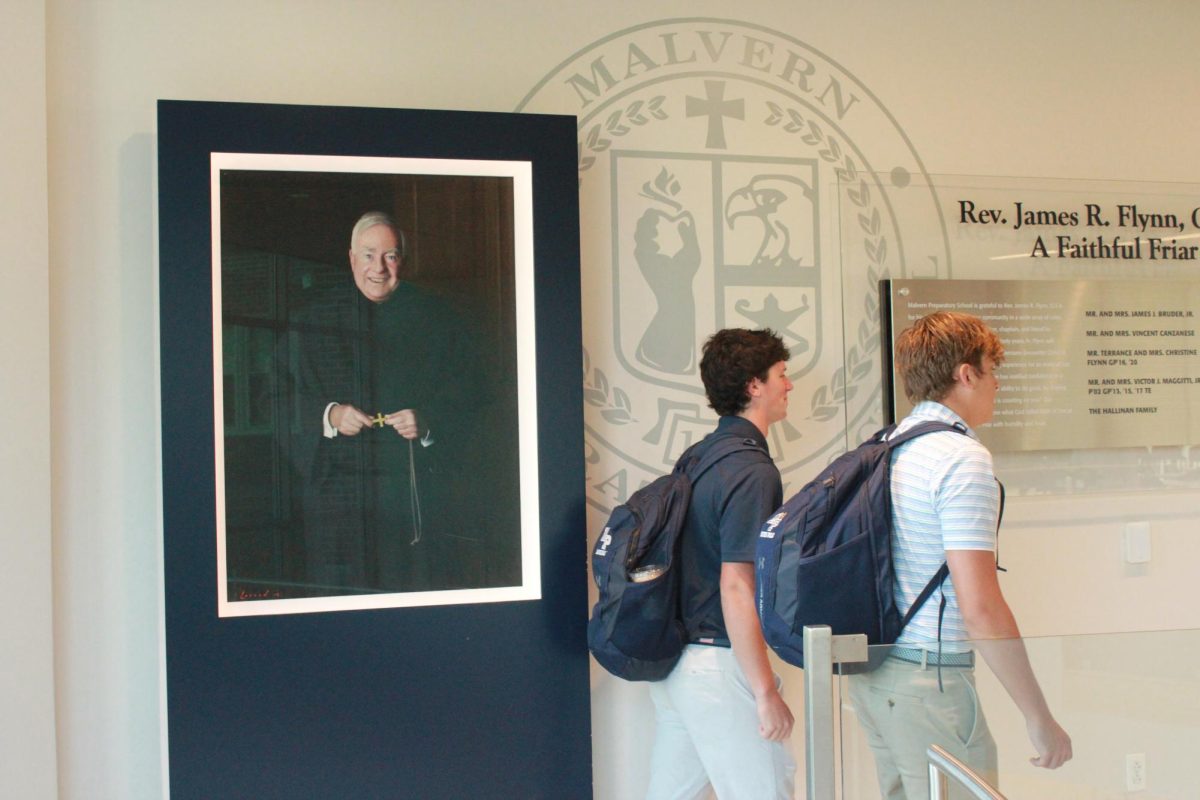Faculty members discuss the possible impact the new SAT will have on students’ education and preparation.

According to the College Board, when students open up the SAT booklet in the Spring of 2016, they will encounter something more useful and applicable to actual real-world knowledge.
How will Malvern adapt to upcoming SAT changes to better prepare its students for the exam and increase their chances of getting into the colleges of their dreams?
According to Interim Director of College Counseling and on-site SAT coordinator Ms. Lauren Randle, one of the major reasons why the SAT will be changing is to more closely resemble the ACT.
“Things change based on competition,” said Randle. “Everyone used to take the SAT while the ACT was the dark horse, so to say. However, for the last few years, the ACT is actually more popular than the SAT. That of course is a huge money loss for the College Board.”
According to the Washington Post, the ACT surpassed the SAT in total test-takers in the high school class of 2012 and continues to do so. The report stated that over the past seven years, the declines in SAT test-takers exceeded 20 percent in 19 states, including drops of 59 percent in Michigan, 46 percent in Illinois, 37 percent in Ohio and 25 percent in Tennessee. These are all states where the ACT test is more widely used in the country today.
But the SAT also had declining usage in some states where its presence is greater than the ACTs. In Pennsylvania, SAT usage declined only 2 percent. In New Hampshire it was down 8 percent and in Vermont 14 percent. However, College Board has been quick to realize the shift.
Despite perception of competition, The College Board has gathered data from various surveys and research and have targeted the new test in a specific way to make the changes as worthwhile as possible.

Students will no longer be asked to simply recall the meaning of a word that they could have memorized in an SAT prep class. Test takers will now be required to interpret the meanings of words from the context of the sentences and paragraphs in which they prepare.
There are also major changes to the reading and writing section. Students will be required to deduce information and support their claims as opposed to simple comprehension. After reading a passage, students will be asked to support each one of their answers with a quote in the following question.
For the grammar section, students will be assessed on their ability to edit and find mistakes, as they were previously. However, now they must follow along and ensure the information is correct and matches up in a sequence of relating paragraphs.
On their website, College Board recognizes that, “this is demanding but rewarding work. These are words that students will use throughout their lives — in high school, college, and beyond.”

The essay will now be optional. The focus of the essay section on the new SAT will be very different from the essay on the current SAT. Students will now be asked to read a passage and explain how the author of the text establishes an argument to persuade his or her readers.
“The new essay section is designed to support high school students and teachers as they cultivate close reading, careful analysis, and clear writing. It will promote the practice of reading a wide variety of arguments and analyzing how authors do their work as writers,” the College Board website states.
Students will now be required to apply their literary, writing, and math skills to solve questions with a history, science, or social studies context by being assessed on historical documents and scientific graphs.
Another major change: There will no longer be penalties for answering questions incorrectly.
“I don’t think that students are aware that they are losing points for simply guessing on the SAT,” said Randle. “I think the College Board is trying to make it a little more fair for the test takers and keep the test as straightforward as possible with less tricks.”
“I think it could result in higher scores which could also be a reason behind it,” said Randle.

Finally, College Board also reports that the new mathematics section “will focus in depth on three essential areas of math: Problem Solving and Data Analysis, the Heart of Algebra, and Passport to Advanced Math.” Through conducting research, they believe these three areas most contribute to college readiness and future careers in the field as well as draw in connections from tangible problems in the 21st century.
Making connections from test questions to the real world is a huge step for the SATs and a main reason for the change. Instead of testing simple knowledge and memorization, the new test will now test one’s ability to apply knowledge to solve a problem or answer an in depth question.
Malvern is preparing its students this way already by incorporating project-based learning and by using themes like create or connect to drive the academic year. Malvern’s guidance counselors believe this will help support students in the change to the new SAT. Counselor Ms. Korin Folan said, “It can only be beneficial. I don’t think it will hinder us at all. I think the creative thinking atmosphere we are trying to create here will help our students moving forward.”
Due to the new format of the testing, the old prep classes and ways of preparing for this test will have to be modified. However, whether they will be as effective is yet to be determined.
“I think [test prep classes] are going to be just as effective. I think the way that we prepare for the test will be very similar to before,” said Folan.
However, it will take some time to learn new strategies to master the new test. “The main part of preparing for the SAT is knowing the strategies, so I think those will change some,” said Folan.
Even though Malvern is incorporating key elements to accommodate for the changes, teachers are putting in additional effort.
“Kaplan has come in a few times to meet with our math and english teachers to go over the changes,” said Folan. “I think they will be using that information to help prepare our students better in the classroom.”
“Kaplan is usually the company that runs all the prep classes as well, so we have been doing as much education up front as we can about how the test will look. I also feel that the sample tests students will take we be very helpful in honing in on key aspects as well,” said Folan.
Teachers are aware of the importance of preparing for the SAT. They feel that being privy to the information relevant to their subject on the SAT will help guide them and their students in the direction they must go. However, most feel that the ultimate goal for their classes is preparing their students to succeed in higher level courses.
“The math department works together to create a curriculum that encompasses the skills students need to ultimately succeed in college and in various career paths,” said second-year math teacher Mrs. Diane Giordano. “I focus on the topics that will prepare my students to be successful in higher level math classes. I am also conscious of the content area that is stressed in the redesigned SAT, so I can use that to help guide me,” said Giordano.
Some teachers feel as though their teaching style really will not be really be affected by the change to the SAT.
Giordano does not anticipate that her teaching style will change for the new test. “I will still have students practice because there is a need to be fluent with certain skills. Fluency is attained with practice,” she said.
English Department Leader Mr. Francis Rogai also believes that his teaching style will not change. “I think if we are doing the job that we want to do, which is helping students become better readers and better writers, everything will take care of itself,” said Rogai. “There are certainly additional classes that may benefit students, but if you are truly a good reader, you can comprehend anything the test throws at you.”
Counselors acknowledge that there are some uncertainties about the new test, and how Malvern will help students to prepare for it. “It’s all a work in progress and it is important to stay as flexible as possible through the transition,” said Folan.
For those students who wish to take the old exam, the opportunity will be available up until March.












